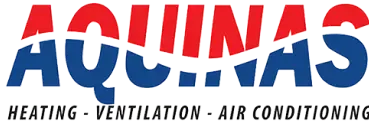Apartment Complex HVAC Maintenance in California: Last-Minute Winter Prep Tips
California’s winters may not bring extreme cold, but they come with their own challenges—especially for apartment complexes. Property managers must deal with fluctuating weather conditions, from rainy, chilly evenings in the Bay Area to surprise heat waves in inland regions. For tenants, comfort is non-negotiable, and that means multi-family HVAC systems must be ready to handle whatever the season throws at them. This guide focuses on apartment complex HVAC maintenance in California’s apartment complexes, ensuring efficiency, reliability, and tenant satisfaction through the unpredictable winter months.
Why California’s Winter Demands Special HVAC Attention
California’s climate varies significantly by region, meaning HVAC maintenance isn’t a one-size-fits-all process. Property managers must consider these regional challenges:
- Bay Area: Expect damp, rainy conditions and cool temperatures that stress outdoor units and ductwork.
- Los Angeles: Winters are mild but can include heat waves, colder evenings, and increased smog that can affect air quality in HVAC systems.
- Orange County: Mild but inconsistent weather with occasional humidity spikes creates wear on HVAC components.
- San Diego: Coastal areas face high humidity and salty air, which can corrode equipment.
- Inland California: Unpredictable winter heat waves and sharp nighttime temperature drops place unique demands on heating and cooling systems.
Understanding these conditions helps property managers tailor their maintenance strategies for their specific region.
Winter HVAC Maintenance Tips for Apartment Complexes
Clean and Inspect HVAC Components Regularly
A well-maintained system starts with clean components. Replacing air filters every 1-3 months improves airflow, reduces strain on the system, and maintains good air quality for tenants. Dirty filters can cause uneven heating or cooling, leading to tenant complaints. Additionally, inspect coils and fans to remove dust or debris that might compromise system performance.
Test Heating Systems Before Heavy Use
Run heating systems for short periods to ensure they’re functioning properly before temperatures drop further. If your property uses centralized boilers or heat pumps, check for odd noises, inconsistent airflow, or uneven temperatures. Catching these issues early prevents breakdowns during the busiest months.
Seal and Inspect Ductwork
Leaky ducts are one of the most common culprits behind inefficient heating in apartment complexes. A quick ductwork inspection can reveal holes or gaps that might be causing heat loss. Sealing these ducts ensures consistent warmth across units and reduces energy waste.
Managing Winter Heat Waves in California
While many associate winter with cold weather, parts of California experience heat waves even during this season. Inland regions can see daytime highs in the 80s or greater, leaving tenants switching between heating and cooling regularly, causing apartment hvac emergency services.
To prepare for these fluctuations, ensure that HVAC systems can seamlessly transition between heating and cooling modes. Programmable or smart thermostats are especially useful, allowing tenants and property managers to adjust settings as temperatures rise and fall. Keep cooling systems in good condition even in winter, as extended downtime can cause components to degrade.
Educating tenants about efficient thermostat use during these shifts also helps maintain energy efficiency and prevents unnecessary wear on the system.
Special Considerations for California Regions
California’s regional diversity means HVAC challenges vary significantly across the state. From the damp conditions of the Bay Area to Los Angeles’ winter heat waves and coastal humidity in San Diego, each area requires a tailored maintenance approach. Here’s how to address these unique climate-driven needs.
Bay Area
Moisture is the biggest challenge during winter in the Bay Area. Frequent rain and high humidity can lead to rust and mold if HVAC systems aren’t properly maintained. Pay close attention to drainage systems and rooftop units. Regularly check ducts for moisture accumulation and clean components to prevent mold growth.
Los Angeles
Los Angeles faces a mix of mild winters and winter heat waves, especially in the valleys. These conditions mean HVAC systems must be ready to transition between heating and cooling as needed. Additionally, smog can accumulate in air filters during stagnant weather, reducing indoor air quality. Frequent filter changes and proper ventilation are essential.
Orange County
Orange County’s mild winters don’t mean HVAC systems can go unchecked. Fluctuating humidity can cause condensation in ductwork, leading to inefficiency and potential tenant discomfort. Clean ducts and vents regularly to avoid musty odors and ensure proper airflow.
San Diego
In coastal areas like San Diego, salt in the air can corrode outdoor HVAC components. Applying a protective coating to exposed equipment extends the lifespan of units. Additionally, schedule frequent inspections to address any wear caused by the moist environment.
Inland California
Inland regions require HVAC systems to handle sharp temperature variations. While heating is crucial at night, cooling systems must be ready for unexpected heat waves. Ensure all systems are calibrated to handle these transitions seamlessly, and check insulation to maximize energy-efficiency during cold nights.
Common Winter HVAC Issues and How to Avoid Them
Even with proactive maintenance, apartment complex HVAC systems can face specific challenges during winter. Recognizing these common issues early helps property managers prevent major disruptions and maintain tenant comfort. Here’s what to watch for and how to address them.
- Uneven Heating: This is often caused by zoning issues or leaky ductwork. Routine inspections and sealing ducts prevent inconsistent temperatures across units.
- Musty Odors: Mustiness is typically a sign of moisture buildup or dirty filters. Address these by maintaining clean ductwork and replacing filters regularly.
- Rising Energy Costs: Inefficiencies from worn components or improper calibration can lead to higher bills. Proactive maintenance helps mitigate these expenses.
Proactive Steps to Keep Tenants Satisfied
Proactive maintenance not only prevents breakdowns but also fosters tenant satisfaction. Here are three ways property managers can stay ahead of issues:
- Schedule Seasonal Inspections: An annual HVAC checkup at the start of winter ensures systems are ready to handle the season’s demands.
- Communicate with Tenants: Provide reminders about energy-saving tips, like closing blinds during heat waves or setting thermostats to moderate temperatures.
- Respond Quickly to Complaints: Addressing tenant concerns promptly minimizes dissatisfaction and prevents small issues from escalating.
Long-Term Benefits of Winter HVAC Maintenance for Apartment Complexes
Winter HVAC maintenance isn’t just about solving immediate problems—it sets the foundation for long-term savings, improved system performance, and enhanced tenant satisfaction. Here are five key benefits that extend well beyond the cold season:
Extended Equipment Lifespan
Proper maintenance reduces wear and tear on critical HVAC components like compressors, fans, and heat exchangers. When systems are routinely inspected and cleaned, they operate more efficiently and experience less strain during peak usage periods, such as cold nights or heat waves. By addressing small issues early—like clogged filters or minor leaks—you can prevent major failures that shorten the lifespan of your equipment. Over time, this translates to fewer costly HVAC replacements and a longer return on your HVAC investment.
Significant Energy Efficiency Savings
A well-maintained HVAC system uses less energy to deliver the same level of comfort. Dirty filters, leaking ducts, or malfunctioning thermostats force systems to work harder, driving up utility costs. For apartment complexes with centralized heating and cooling systems, these inefficiencies can quickly add up. Seasonal maintenance, such as duct sealing and thermostat calibration, ensures the system operates at peak efficiency, keeping energy costs manageable for property managers and tenants alike.
Improved Tenant Retention
Comfortable tenants are happy tenants. Reliable heating on cold nights and consistent indoor air quality can be deciding factors for tenants renewing their leases. Conversely, system failures during key moments—such as a sudden winter storm or a heat wave—can frustrate tenants, leading to complaints or even higher turnover. Preventive HVAC care fosters trust, improves tenant satisfaction, and reduces the costs associated with filling vacant units.
Fewer Emergency Repairs
Emergency HVAC repairs can be both expensive and disruptive, particularly in the middle of winter. These repairs often result from deferred maintenance or undetected system issues. By scheduling routine inspections and addressing small problems early, property managers can avoid mid-season breakdowns, minimizing tenant disruptions and preserving operating budgets.
Compliance and Environmental Impact
California’s energy standards emphasize efficiency and reduced emissions. Regular HVAC maintenance ensures your systems meet these standards, helping you avoid potential fines or penalties. Additionally, energy-efficient systems have a smaller carbon footprint, contributing to sustainability goals and improving your property’s reputation.
Conclusion
HVAC maintenance in California is not just about ensuring tenant comfort—it’s about adapting to a diverse range of climate conditions. While this post focuses on apartments, these tips apply to all types of multi-family dwellings, including small duplexes to larger mixed use buildings. From coastal humidity to winter heat waves, understanding your property’s unique needs is key to keeping systems efficient and reliable.
By following these preparation tips, property managers can avoid costly breakdowns, reduce energy waste, and maintain tenant satisfaction throughout the unpredictable winter months. Whether it’s a quick filter change or sealing ductwork, every effort counts in making your HVAC system winter-ready.

